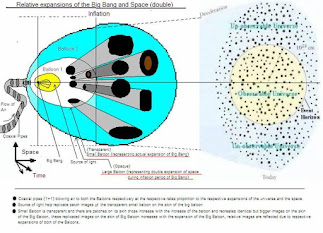Some Terreck Brian Franks Questioned: I am struggling to understand how time is either speeding up or slowing down, when in reality it seems like our "devices to measure time" are impacted by different forces; and these forces may alter our devices for measuring time even though they don't alter time or cause time to speed up or slow down. I honestly admit I do not understand this but I want to. I hear gravity makes time occur at a different speed, but a neighboring planet may have a different gravity - yet I don't see how time speeds up or slows down, even if a clock (device to measure time) may run twice as fast. Wouldn't we acknowledge that the change is the device and not actual passing of time. 🤦♀️ why doesn't this make sense to me... lol
QA Session :
Question (1): I am struggling to understand how time is either speeding up or slowing down.
Responder:
At the outset, let me describe how time is defined through abstraction -
(i) "It is the indefinite continued progress of existence and events in the past, present, and future regarded as a whole, succeeds in irreversible succession."
The above is scientific definition of abstract time. Abstraction is a conceptual process (the quality of dealing with ideas rather than events.)
Abstract time is referred in the fourth dimension, above three spatial dimensions - the dimensions of height, depth, and width within which all things exist and move. Note that dimension is a measurable extent of a particular kind, such as length, breadth, depth, or height.
However, in physical applications, time is operationally defined as -
(ii) 'What a clock reads.' - This is real representation through a near approximation of the abstract time.
(A1) Therefore, since abstract time succeeds in irreversible succession, its progression either be speeding up or slowing down, are INVALID.
Moreover, from the abstract definition of time above, it is obvious that the existential events, within the Universe, are responsible to invoke conceptual time - which is progressing in irreversible succession, in the fourth dimension. In addition to that, though the existential events are real in space, but since the abstract time itself is conceptual, so it does not depend on real events, but those events can only invoke abstract time.
Furthermore, since operational time is real representation of the abstract time but no clock can read time - ideal to the abstract time, as the gravitational influence exerts mechanical stress on the clock oscillator depending upon the gravitational potential where a clock is.
Question (2): In reality it seems that our "devices to measure time" are impacted by different forces;
(A2) Certainly yes, as the clocks are subject to mechanical stress corresponding to the gravitational potential, so the oscillation of such measuring devices are impacted by the mechanical stress due to the gravitational force.
Question (3): These forces may alter our devices for measuring time even though they don't alter time.
(A3) Yes, correctly said. The corresponding gravitational force influence oscillation of the clocks, resulting frequency of the clock oscillator lowered out of a gravitational well, correspondingly its wavelength enlarged resulting a greater reading in time, but such greater reading is not because of time dilated but because of the temporary error for the mechanical stress due to gravitational force on the clock oscillator. This is a phenomenon of Wavelength Dilation and not Time Dilation.
Question (4): I honestly admit I do not understand this but I want to.
(A4) By now, you have probably understood what is happening in the background as described in the (A3) above. You have raised this question in the very right direction.
Question (5): I hear gravity makes time occur at a different speed, but a neighbouring planet may have a different gravity.
(A5) You are intelligent enough, and also in very correct direction in raising this question. It is obvious that the speed results displacement of a body so that the gravitational potential on that speeding body lowers as it speeds out of a gravitational well, correspondingly resulting lower gravitational potential that less-influence that speeding body, correspondingly its frequency lowers and wavelength increases resulting increased oscillation in the clock oscillator, so the clock reads greater time due to such temporary mechanical error. But when that speeding body passes besides a neighbouring planet/body, the above said processes reverses and the clock starts reading lower time than the time it was reading out of its originating source of gravitation well.
Question (6): acknowledge that the change - is the device and not actual passing of time - doesn't this make sense to me:
(A6) by now you know how intelligent you are and also how correct your way of thinking is. Definitely, one day you are going to be a great scientist! I have enough reasons to admit that.


